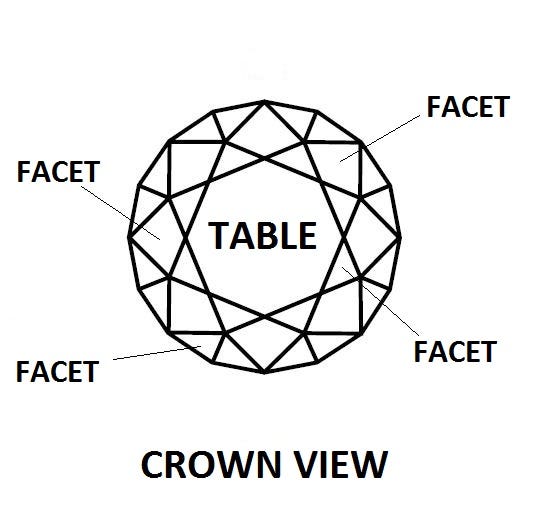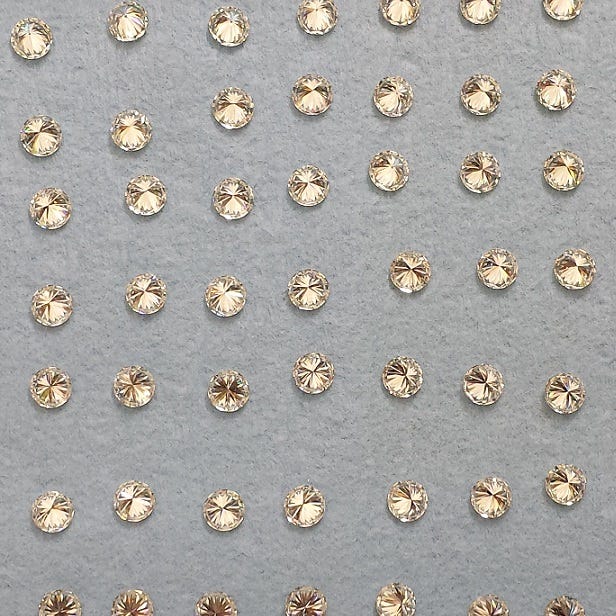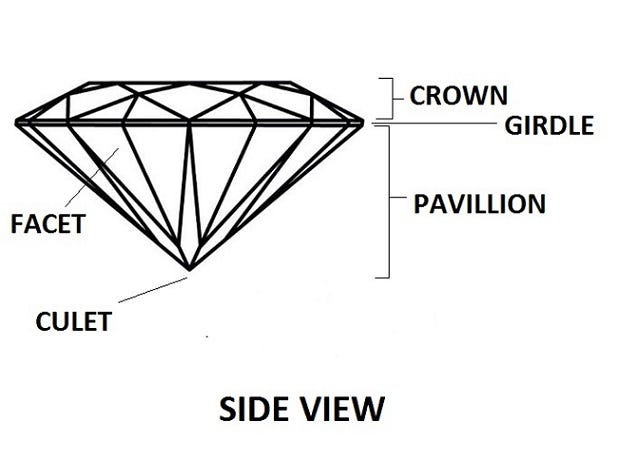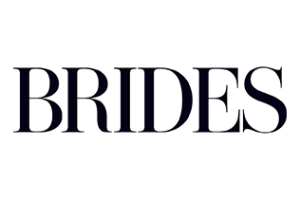The nomenclature surrounding the parts of a gemstone can be quite confusing! There’s talk of tables, but none of chairs, and of girdles, but nothing about corsets. And what the heck is a culet?
Let’s break down the anatomy of the average gemstone and answer those pesky terminology questions.
Below is a diagram of the “crown” of a gemstone. And no, it doesn’t have a crown because it’s a royal stone – the crown is simply what gemologists call the top part of the stone.
The table of a stone is the flat facet at the center of the crown. Facets are the flat, cut surfaces of the stone, and can vary in shape and size. The facets on the crown are called (surprise!) crown facets. The table is considered a facet, and is included when counting the number of facets a stone has.
The shape of the table varies by stone cut. The round brilliant cut pictured above features an octagonal table. An emerald cut, however, has a rectangular one. The number of facets differs by cut as well. For example, a round brilliant cut moissanite has 58 facets, while an emerald cut has only 46. The cushion cut has the most facets with 82.
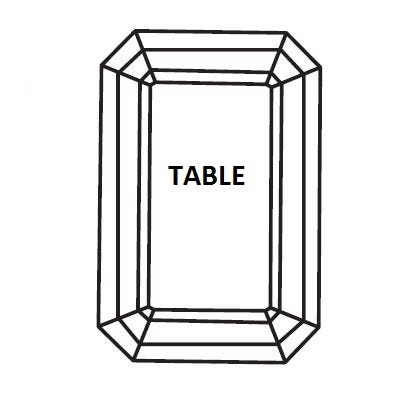
An emerald cut stone has a rectangular table. The size of the rectangle depends on the width and length of the stone.
The underside of the stone is called the pavilion. Like the crown, the pavilion has its own set of facets. The smallest is usually the culet, or bottom facet. However, sometimes the culet comes to a single point and is not faceted at all.
The girdle of the stone separates the crown from the pavilion and encircles the entire gem. Fun fact: All Forever Brilliant® Moissanite stones are engraved with “forever brilliant” on the girdle. Some expert gemologists can see the text with the naked eye; however, the average person needs a magnifying loupe to make it out.
See, that wasn’t so hard! Now you’re an expert on gemstone anatomy!

